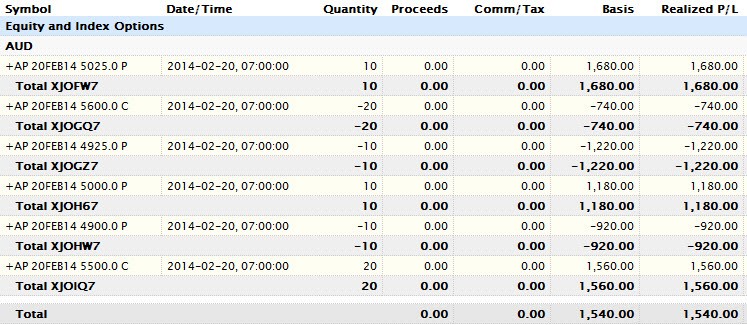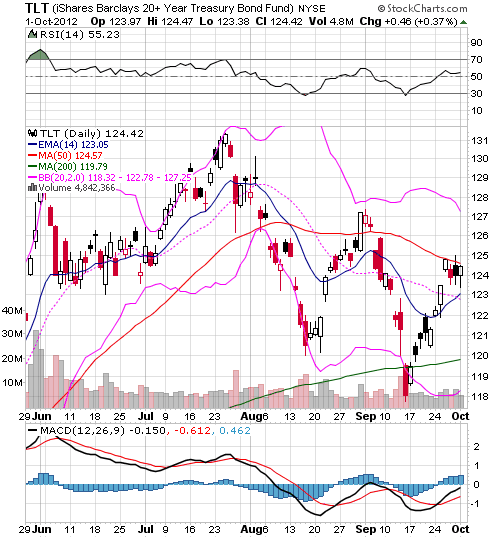Setting Up an ETF Iron Condor
Post on: 10 Июнь, 2015 No Comment

Iron condors can be great strategies under the right circumstances. But the problem is knowing when the right circumstances are present. With four components to this options strategy traders have a lot to think about when setting it up an iron condor. But when the process is broken down into basic steps, the task of finding an iron condor becomes much less daunting. This introductory article explains the basics of how to set up an iron condor according to the Market Taker Mentoring methodology.
Click here to learn how to utilize Bollinger Bands with a quantified, structured approach to increase your trading edges and secure greater gains with Trading with Bollinger Bands® A Quantified Guide.
First Things First
First, an iron condor is an options strategy that consists of a credit put spread (short a put and long a put with a lower strike) and a credit call spread (short a call and long a call with a higher strike). All options in this four-legged strategy are in the same expiration month and on the same underlying security.
The objective is to profit from time decay of the short options, while holding the long options as protection against a big move in the underlying asset. The iron condor is in the family of options strategies known as income trades. They are generally high probability trades that generate income each month if the underlying security stays within a range.
Setting Up the Trade
Though these are high probability trades, finding a suitable iron condor that makes good sense from a risk-reward perspective is often easier said than done. Heres a peek at our methodology for setting up an iron condor.
There are four things to consider:
- Technical analysis
- Fundamental analysis
- Volatility analysis
- Lining up prices
The first three of these the analysis steps help to ensure that the set up makes sense. To find a trade for any options strategy, it is necessary to stack the odds in your favor. Though they dont guarantee a winner, these steps help ensure that the trade has a statistical advantage.
Sometimes, however, the set up is perfect. The chart looks good, fundamentals and volatility too. But a trade just cant be set up because of the price distribution. The last step, lining up the prices is to make sure that the trade can be done at reasonable prices. Lets start at the beginning.
Technical Analysis
Iron condors profit if the underlying security trades in a range. Figure 1 shows an example of IWM, the ETF on the Russell 2000 that has been in a range for a few months.
The range between about $55.50 and $62.50 experienced in this period beginning in August makes this, technically, a quality candidate for an iron condor. Again, iron condors profit when they stay in a range. To understand this, lets take a look at a risk graph of an iron condor.
Each iron condor involves a short out-of-the-money call and a short out-of-the-money put with a long farther out-of-the-money call and put for protection. Profit is potentially derived from the fact that the short options – being closer-to-the-money have more time premium than the long options. This means the position as a whole gains as time passes as the options erode in value due to time decay.
The diagram below shows a profit and loss diagram of an iron condor at expiration.

If the underlying remains between the two short option strike prices, the position reaches its maximum profit potential. If the ETF is below the long put strike or above the long call strike at expiration, it produces the maximum loss for the trade.
Putting It Together
Therefore, traders need to look for price charts showing securities in a range, oscillating back and forth from support to resistance levels that correspond to the short strike prices of the iron condor. These channel stocks or ETF are ideal potential candidates for iron condors. But next, they have to meet the fundamental criteria.
Fundamental Analysis
Though fundamental analysis can be fairly involved when analyzing investments, it doesnt have to be so when analyzing the data for an iron condor. Iron condors are a volatility play, not a value play. So the most important fundamental information is to know when potential volatility events are expected. Look for earnings (in the case of individual equities), Fed announcements, PPI and other potential market moving news. Here, no news is good news.
Volatility Analysis
Next traders must consider volatility. An iron condor is a volatility selling strategy. With each iron condor trade, the trader essentially sells the spread at a particular volatility level called the implied volatility. Implied volatility is the future volatility level expected by the market that is implied by the prices of the options. The more volatility the market expects the ETF to experience in the future, the higher the implied volatility. The less volatile the market expects the ETF to be, the lower the implied volatility.
If a trader sells the iron condor at an implied volatility level above the actual volatility that the ETF endures during the time until expiration, the trade has a statistical advantage. This is where traders can really gain an edge in their iron condor construction. Getting edge from volatility is a big part of the Market Taker Mentoring methodology.
Lining Up Prices
Even if the iron condor candidate passes the three analysis steps, sometimes the trade still cant be established because the market prices prohibit setting up a trade that makes sense. There are a couple of reasons why the prices might not line up.
First of all, remember that there are four legs to this strategy. Each leg has a bid-ask spread that represents a transaction cost called slippage. The wider the bid-ask on an option, the more that is given up to the market in the form of slippage. With four options, this cost can really add up.
Next is strike proximity. Sometimes the strike prices are simply too far apart in comparison to the ETF price to construct a good trade. Strikes that are too wide can make the net credit too small in comparison to the risk of the trade. The objective with any iron condor is to reap the highest credit possible, but far enough apart to allow the greatest margin for error. Strike proximity often prevents a condor from being initiated at beneficial prices.
Usually ETFs provide ample strikes. Sometimes the trader will choose to not use consecutive strikes on the credit spreads in order to take in a higher premium in exchange for a bit more risk.
Wrap Up
Setting up every iron condor requires going through these four steps. Though this article is just an introduction to the process, it provides enough information to get you started. Though the process is presented step by step, the order of these steps is not important. The goal is to use each of these four steps to gain edge all along the way, giving each iron condor a statistical advantage over a less methodical set up.
MarketTaker.com or through email at dan@markettaker.com. He can also be followed on Twitter at twitter.com/Dan_Passarelli.
Backtested on over 17,000 trades test this new trading indicator for Leveraged ETFs and find high probability setups daily click here now .














